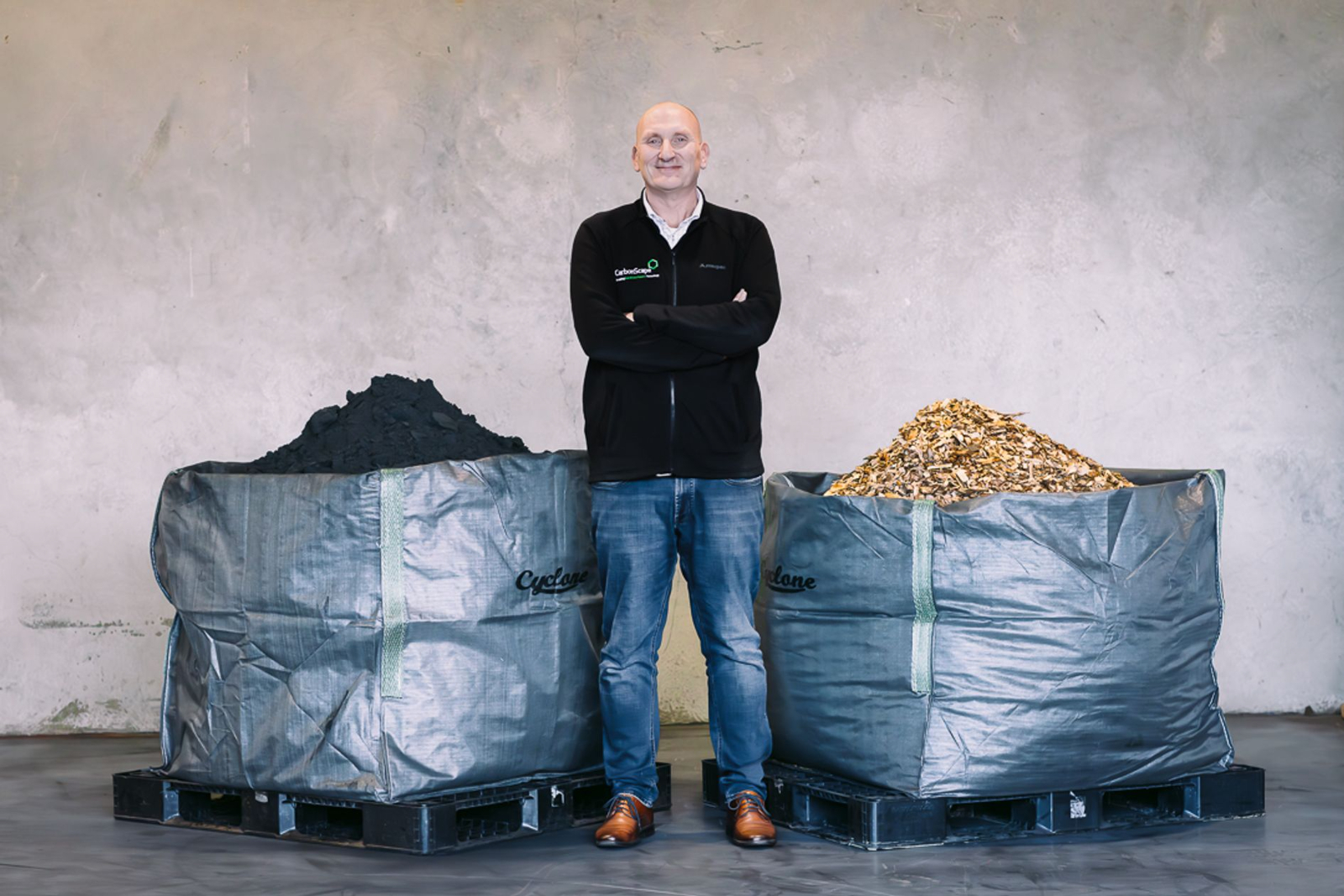Sign up for daily news updates from CleanTechnica on email. Or follow us on Google News!
Graphite is essential for making lithium ion batteries. In fact, according to the Wall Street Journal, it accounts for up to half the weight of a typical battery today. While the world slept through the first two decades of the 21st Century, China was busy figuring out how to become the dominant supplier of many materials and components that are essential to manufacturing batteries for electric vehicles. One of them is graphite.
China is estimated to produce 60 percent of the world’s natural graphite, which is mined from the Earth, and 69 percent of all synthetic graphite. In addition, it refines nearly all of the very pure graphite used in lithium ion batteries. In a normal situation, that wouldn’t be a problem. You need graphite, you buy it from China and pay the going rate. But the US and Europe have finally woken up from their reverie to find they are utterly dependent on graphite from China, so they have started looking for ways to establish their own supply chains that exclude .that country.
The Inflation Reduction Act is how the US intends to reduce its dependence on China for essential battery materials. The EU is considering similar action. The issue came to a head this fall when China reacted to those policy initiatives by imposing stricter export controls on the graphite it produces. Suddenly, the rest of the world realized how they had allowed themselves to be boxed out from access to this critical battery material. Being dependent on graphite from China was no longer an inconvenience, it was a matter of vital national interest.
CarbonScape Graphite From Wood Chips

What to do? Ivan Williams, who lives in a bucolic section of New Zealand, may have an answer. He has started a new company called CarbonScape. Williams and his team feed the wood chips into machines that turn out a form of synthetic graphite. The wood chips are heated using a process known as pyrolysis to create biochar, a carbon-rich material that is then milled and converted to a raw form of graphite, which is then purified and coated to get the quality needed for battery anodes. Williams says the engineered material is as pure as synthetic graphite made from fossil fuels.
CarbonScape says it can make one metric ton of synthetic graphite from seven tons of dry wood chips. Williams believes it could also make use of so-called slash, which is the waste branches and other unwanted wood left in forests during logging. There is a nearly inexhaustible supply of that material. “Graphite from biomass is certainly an interesting new supply route,” said James Willoughby, senior research analyst at Wood Mackenzie.
China’s strengthening of export controls was a reminder of the vulnerability of global commodity markets to geopolitical tensions, already illustrated by wild swings in prices of crude oil, natural gas and wheat due to the Ukraine war. Beijing’s decision to require export permits for some graphite products beginning December 1 came days after the U.S. tightened restrictions on Chinese companies’ access to semiconductors.
Finding an alternative supply for key commodities isn’t easy. It can take years to build a mine, particularly in developed countries with strict permitting processes. Promising technology can be untested at a large scale, and developers often need funds to expand. Government support can be vulnerable when a new leader takes power.
In battery technology, innovation is happening in ways that could redraw the outlook for graphite demand, which the International Energy Agency estimates could rise by as much as 25 times in the two decades through 2040. Some companies are trying to produce batteries that use less or no graphite at all, such as by using sodium with a hard carbon anode. Toyota and Idemitsu Kosan, an oil company, plan to work together to advance mass production of solid state batteries that use lithium metal in place of graphite.
Skeptics Speak Out
Not everyone is convinced CarbonScape’s technology is the real deal, however. Adam Best, a principal research scientist at Australia’s Commonwealth Scientific and Industrial Research Organisation (CSIRO), told the Wall Street Journal he doesn’t consider biomass to be an efficient way to make graphite because of the amount of wood chips that would be needed. “We do see natural graphite as a more sustainable option,” he said, and suggested recycling graphite from used batteries could also be another source of supply.
Best is not wrong. Battery recycling companies like Redwood Materials claim 95 percent of the materials inside a lithium ion battery can be reclaimed and reused. But it will be years before recyclers can provide all the graphite needed as the acceptance of electric vehicles and battery energy storage accelerates in coming years. There should be plenty of demand for graphite for years to come and sourcing it from a country not named China will be essential.
Williams said CarbonScape has been developing the technology since 2016 and can reliably produce synthetic graphite. The performance of its anode material has been verified by some battery makers, including Amperex Technology, (ATL) which is owned by Japan’s TDK and is an investor in the company. “However, the biggest benefits of CarbonScape’s bio-graphite isn’t in superior performance but reduction in carbon footprints,” said Joe Kit Chu Lam, ATL’s executive vice president.
Graphite made from fossil fuels requires a lot of energy because it is cooked at 3,000 degrees Celsius during processing and creates greenhouse gases and fine particles that are harmful to human health, said Adam Best at CSIRO. The cost of producing synthetic graphite from wood using CarbonScape’s technology is competitive with making it from fossil fuels, said Williams, without providing detailed figures. Temperatures required to create graphite from wood chips are lower, and the process takes hours rather than weeks, he said.
CarbonScape Investors
There may be doubters, but CarbonScape has caught the attention of European forestry products company Stora Enso, which invested $18 million in the company for a stake of around 15%. That deal opened up a supply line, and Stora Enso has already delivered some Nordic wood samples for testing at CarbonScape’s New Zealand plant. “This investment represents a strong statement of support for sustainable sourcing of battery materials for global decarbonization,” Williams told Reuters. CarbonScape aims to select a site for its first commercial plant soon. It is looking in Europe, while also considering southeastern U.S. states, where there are large timberlands and electricity prices are attractive, Williams said.
The company says its process does not require any trees to be cut down and is carbon neutral according to Williams. The use of logging waste could play a role in maintaining forests, he said, which is an increasing priority of some governments as wildfires grow more intense due to climate change. “Like with every new technology, it takes time to develop,” Williams said. “Then it takes time for industry to adopt.”
The Takeaway On Synthetic Graphite
Is graphite from forest products possible? Can it be cost competitive? We don’t know and won’t know for a while. But if it breaks the current reliance on China for virtually all graphite, it is certainly something worth pursuing. As we say all the time at CleanTechnica, the batteries that will be in use in 2030 have yet to be invented.
These are exciting times that are similar in some ways to the early years of the automobile. Thousands of researchers in hundreds of labs are looking for ways to make batteries that are more energy dense, perform better in the cold, cost less, and are more environmentally friendly. If the supply chain for battery materials can be shortened to make it possible to avoid sourcing so many vital battery materials from China, so much the better.
Have a tip for CleanTechnica? Want to advertise? Want to suggest a guest for our CleanTech Talk podcast? Contact us here.
Our Latest EVObsession Video
I don’t like paywalls. You don’t like paywalls. Who likes paywalls? Here at CleanTechnica, we implemented a limited paywall for a while, but it always felt wrong — and it was always tough to decide what we should put behind there. In theory, your most exclusive and best content goes behind a paywall. But then fewer people read it!! So, we’ve decided to completely nix paywalls here at CleanTechnica. But…
Thank you!
CleanTechnica uses affiliate links. See our policy here.




